ChIR : Surgery, Computer Science and Robotics
P L A N N I N G & S I M U L A T I O N O F R O B O T I C P R O C E D U R E S
We propose an integrated approach in which all the processing and user interaction are lumped in a single interface.
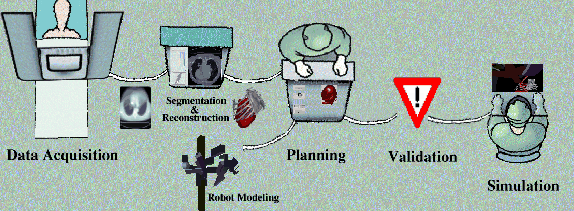
Planning
The planning step can further be broken down into:
-
Finding an optimal triplet for the incision sites.
-
Finding an adequate positioning of the robot.
Port Placement
After having identified a set of points that can be used for the access of the robotic tools, referred to as admissible points, an exhaustive search for a triplet that insures the best accessibility of the tools is carried out. Moreover, other requirements have to be present such as a ``comfortable'' position for the surgeon, in addition to some anticipation for the robot positioning step.
Targets
Target points represent the area on which the surgeon would work, and the direction along which he would be able to achieve his task, which is dictated by the physiological of the patient.
Criteria
Each admissible point goes through a series of tests to characterize its adequacy for use as an entry point for the robotic tool or the endoscope.
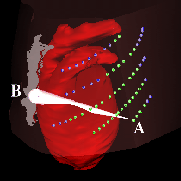
|
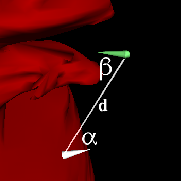
|
Optimization
Finding the best triplet of ports is done in two steps: First the best endoscope position is chosen based on the above listed criteria, then all possible pairs are ranked according to their combined quantitative grade and their position with respect to the endoscope.
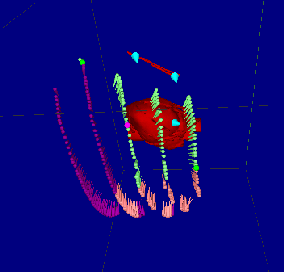
Robot Positioning
Once a suitable port placement has been found, the robot has to be positioned in a way that avoids collisions between its arms, in addition to other constraints.
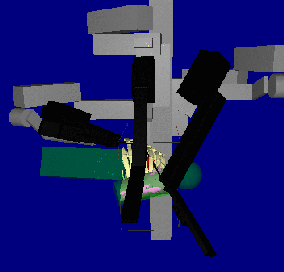
Simulation
The simulator has the double aim of offering the surgeon a realistic environment to develop good control over the robot, and of validating the suggested incision ports.
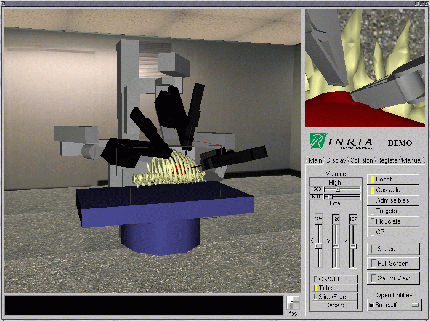
Results Transfer and Monitoring
Finally the obtained results are applied on the patient in the operating room after suitable registration with the pre-operative data and with the robot.
| Endoscopic Movie |
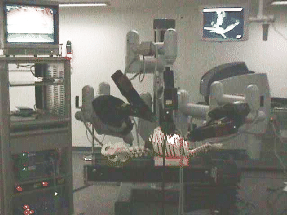
|
3d Movie |
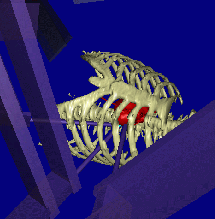
|
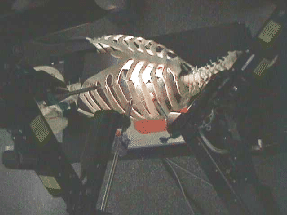
|
